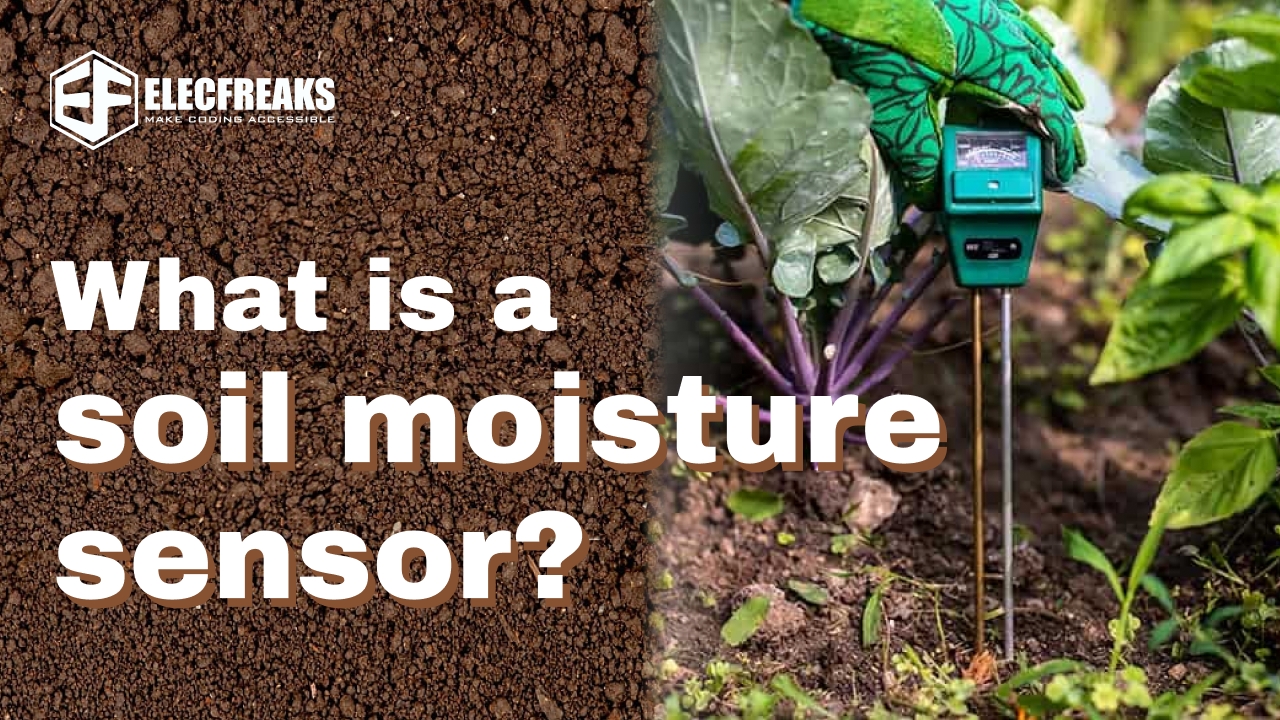😊New Customer Discounts😊All Order Get 5% Off.
Menu



A soil moisture sensor is a device that measures the moisture, or water content, present in the soil. It is used in various applications such as agriculture, horticulture, and environmental monitoring to determine soil water availability and to help optimize irrigation practices.
A soil moisture sensor usually consists of two main parts: a soil moisture sensor probe and an electronic circuit. Soil moisture sensor probes are inserted into the soil to measure the volumetric water content (VWC), or the amount of water in the soil as a percentage of the total soil volume. Electronic circuitry processes data from soil moisture sensors and provides moisture readings in an easy-to-interpret format.
Different types of soil moisture sensors exist, including resistive, capacitive, and TDR (time domain reflectometer) sensors. Resistive sensors measure the electrical resistance of the soil, which is inversely proportional to the moisture content. Capacitive sensors work by measuring changes in the dielectric constant of soil, which is affected by the presence of water. TDR sensors measure the time it takes for an electromagnetic pulse to travel through the soil, which is affected by soil moisture content.
Soil moisture sensors are essential tools for farmers and gardeners as they monitor moisture levels in the soil and make informed decisions about irrigation schedules. By avoiding over- or under-watering, they can optimize water use, promote healthy plant growth, and prevent water wastage.
1. Decagon Devices (METER Group): Decagon Devices offers a range of soil moisture sensors, including the EC-5, EC-5T, and ECH2O series. These sensors utilize capacitance-based technology to measure soil moisture accurately.
2. Irrigators: Irrometer is a reputable brand that offers soil moisture sensors like the Watermark range. Watermark sensors use electrical resistance to measure soil moisture and are commonly used in agricultural applications.
3. Vegetronix: Vegetronix offers the VH400 series soil moisture sensors. These sensors use frequency domain measurement techniques and are known for their accuracy and reliability.
4. Davis Instruments: Davis Instruments produces the GroPoint Profile soil moisture sensor. These sensors utilize Time Domain Reflectometry (TDR) technology to provide a detailed soil moisture profile.
5. Spectrum Technologies: Spectrum Technologies offers the FieldScout TDR 350 soil moisture sensor, which uses time domain reflectometry to measure soil moisture, temperature, and salinity.
Besides, ELECFREAKS also provides one choice of soil moisture sensors for kids, that can help them achieve some meaningful projects.
The ELECFREAKS soil moisture sensor is a simple and cost-effective sensor designed to measure soil moisture levels. It utilizes the resistance-based measurement principle to determine the moisture content in the soil. The soil moisture sensor consists of two probes that need to be inserted into the soil. When the soil is wet, it conducts electricity, resulting in a lower resistance. As the soil dries out, the resistance increases.
The ELECFREAKS soil moisture sensor can be connected to a microcontroller or development board, such as a micro:bit, to read the moisture values. By analyzing the sensor readings, you can determine the soil’s moisture condition and make informed decisions about irrigation or watering schedules.
With these soil moisture sensors, we can do some projects as follows:
1. Automatic Plant Watering System: Build an automatic watering system that uses a soil moisture sensor to detect the moisture level in the soil. When the moisture falls below a certain threshold, the system triggers the pumps to irrigate the plants until the desired moisture level is reached.
2. Smart Garden Monitoring: Create a smart garden monitoring system that utilizes soil moisture sensors to monitor the moisture content in the soil. Connect sensors to microcontrollers or IoT platforms to collect data and send alerts or notifications to your smartphone when soil moisture is too high or too low. This project helps you remotely track your garden’s watering needs.
3. Plant health monitoring: Develop a plant health monitoring system that combines soil moisture sensors with other environmental sensors such as temperature and humidity sensors. By collecting data from multiple sensors, you can assess the overall health of your plants and take appropriate action, such as adjusting your watering schedule or providing additional care.
4. Data logging and analysis: Build a data logging system using soil moisture sensors to continuously monitor and record soil moisture levels. Store data in a microcontroller or SD card and analyze it to gain insight into soil moisture patterns, helping you make informed decisions about irrigation practices and plant health management.
5. Plant Watering Reminder: Create a plant watering reminder system using a soil moisture sensor and a display or LED indicator. Sensors detect moisture in the soil, and if it falls below a certain threshold, the system activates a reminder to water the plants by displaying a message or lighting up LED lights.
If you are reading this article and want to have a try with your students, you can consider this powerful kit, micro:bit Smart Agriculture Kit.
This Kit obtains a soil moisture sensor and provides rich case resources on wiki.
Stay up-to-date with our latest promotions,discounts,sales,and special offers.